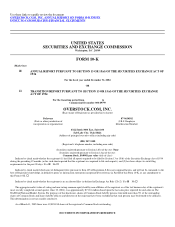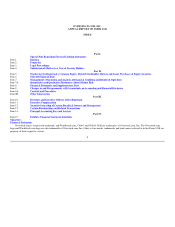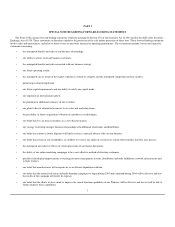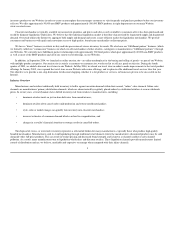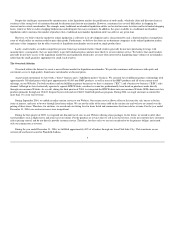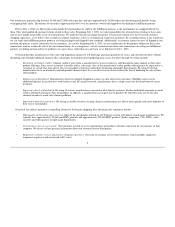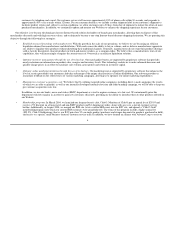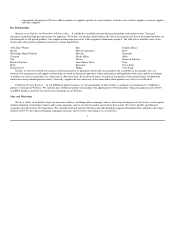Overstock.com 2004 Annual Report Download - page 7
Download and view the complete annual report
Please find page 7 of the 2004 Overstock.com annual report below. You can navigate through the pages in the report by either clicking on the pages listed below, or by using the keyword search tool below to find specific information within the annual report.
inventory products to our Websites in order to create an atmosphere that encourages customers to visit frequently and purchase products before our inventory
sells out. We offer approximately 50,000 non-BMV products and approximately 500,000 BMV products in eight departments on our main Website,
www.overstock.com.
Closeout merchandise is typically available in inconsistent quantities and prices and often is only available to consumers after it has been purchased and
resold by disparate liquidation wholesalers. We believe that the traditional liquidation market is therefore characterized by fragmented supply and fragmented
demand. Overstock utilizes the Internet to aggregate both supply and demand and create a more efficient market for liquidation merchandise. We provide
consumers and businesses with quick and convenient access to high-quality, brand-name merchandise at discount prices.
We have a "direct" business, in which we buy and take possession of excess inventory for resale. We also have our "fulfillment partner" business (which
we formerly called our "commission" business) in which we sell merchandise of other retailers, cataloguers or manufacturers ("fulfillment partners") through
our Websites. We currently have fulfillment partner relationships with approximately 380 third parties which post approximately 40,000 non-BMV products,
as well as most of the BMV products and all of our current travel offerings, on our Websites.
In addition, in September 2004, we launched an online auction site—an online marketplace for the buying and selling of goods—as part of our Website,
with multiple product categories. Our auction site is strictly a consumer-to-consumer site; we do not list or sell any goods on this site. During the fourth
quarter of 2003, we added a discount travel store to our Website. In May 2004, we closed our travel store in order to make improvements to the travel product
offerings. In January 2005, we re-opened the travel store on our Website with cruise offerings, and we plan to offer additional travel services later this year.
Our objective is to provide a one-stop destination for discount shopping, whether it is for products or services, in businesses proven to be successful on the
Internet.
Industry Overview
Manufacturers and retailers traditionally hold inventory to buffer against uncertain demand within their normal, "inline" sales channels. Inline sales
channels are manufacturers' primary distribution channels, which are characterized by regularly placed orders by established retailers at or near wholesale
prices. In recent years, several dynamics have shifted inventory risk from retailers to manufacturers, including:
dominant retailers insist on just-in-time deliveries from manufacturers;
dominant retailers often cancel orders mid-production and return unsold merchandise;
style, color or model changes can quickly turn inventory into closeout merchandise;
incorrect estimates of consumer demand which can lead to overproduction; and
changes in a retailer's financial situation or strategy results in cancelled orders.
The disposal of excess, or overstock, inventory represents a substantial burden for many manufacturers, especially those who produce high-quality
branded merchandise. Manufacturers seek to avoid liquidating through traditional retail channels where the manufacturer's discounted products may be sold
alongside other full-price products. This can result in weaker pricing and decreased brand strength, and is known as channel conflict or sales channel
pollution. As a result, many manufacturers turn to liquidation wholesalers and discount retailers. These liquidation channels provide manufacturers limited
control of distribution and are, we believe, unreliable and expensive to manage when compared with their inline channels.
3
•
•
•
•
•


